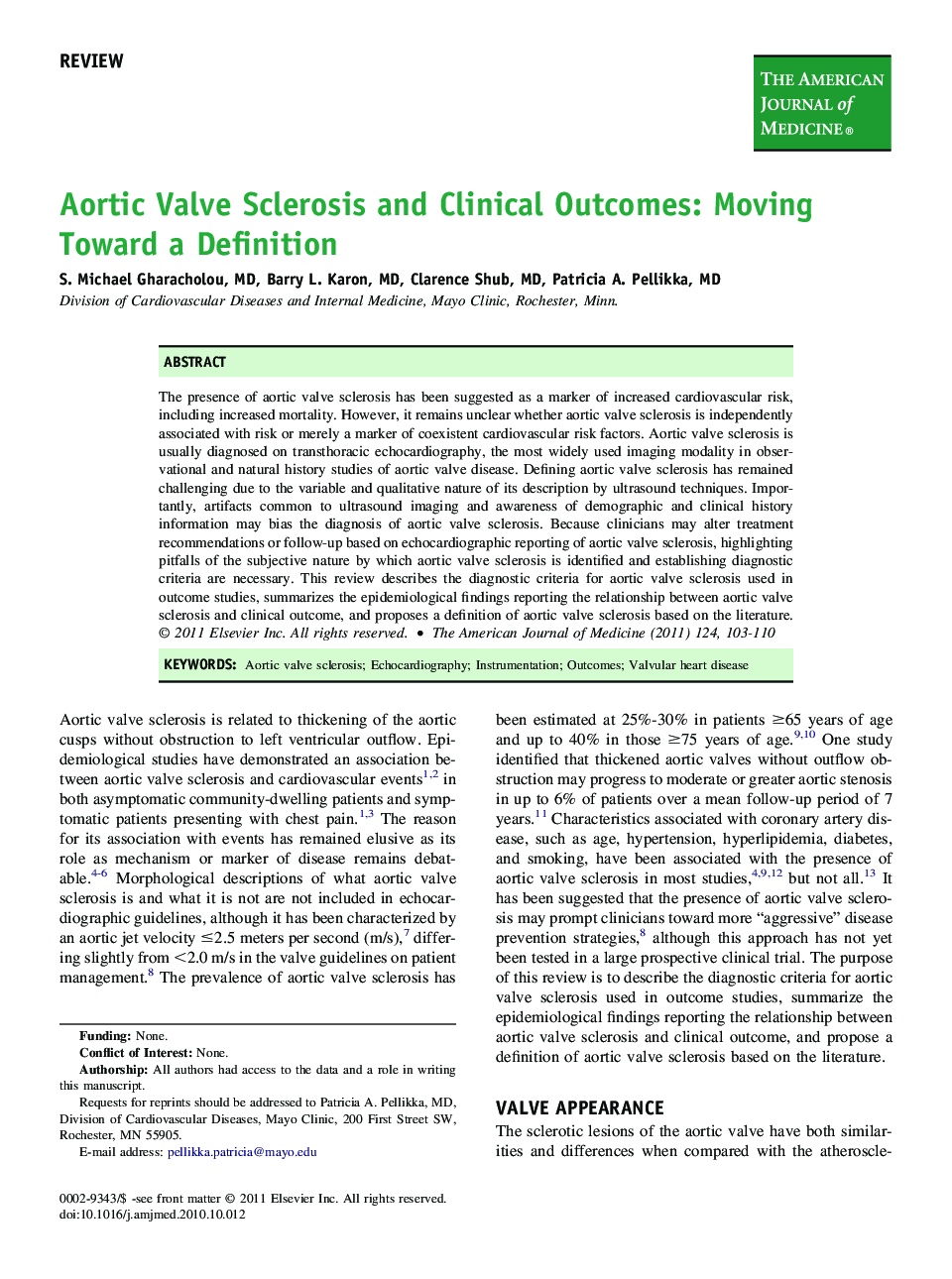| Article ID | Journal | Published Year | Pages | File Type |
|---|---|---|---|---|
| 2723984 | The American Journal of Medicine | 2011 | 8 Pages |
Abstract
The presence of aortic valve sclerosis has been suggested as a marker of increased cardiovascular risk, including increased mortality. However, it remains unclear whether aortic valve sclerosis is independently associated with risk or merely a marker of coexistent cardiovascular risk factors. Aortic valve sclerosis is usually diagnosed on transthoracic echocardiography, the most widely used imaging modality in observational and natural history studies of aortic valve disease. Defining aortic valve sclerosis has remained challenging due to the variable and qualitative nature of its description by ultrasound techniques. Importantly, artifacts common to ultrasound imaging and awareness of demographic and clinical history information may bias the diagnosis of aortic valve sclerosis. Because clinicians may alter treatment recommendations or follow-up based on echocardiographic reporting of aortic valve sclerosis, highlighting pitfalls of the subjective nature by which aortic valve sclerosis is identified and establishing diagnostic criteria are necessary. This review describes the diagnostic criteria for aortic valve sclerosis used in outcome studies, summarizes the epidemiological findings reporting the relationship between aortic valve sclerosis and clinical outcome, and proposes a definition of aortic valve sclerosis based on the literature.
Related Topics
Health Sciences
Medicine and Dentistry
Medicine and Dentistry (General)
Authors
S. Michael MD, Barry L. MD, Clarence MD, Patricia A. MD,
